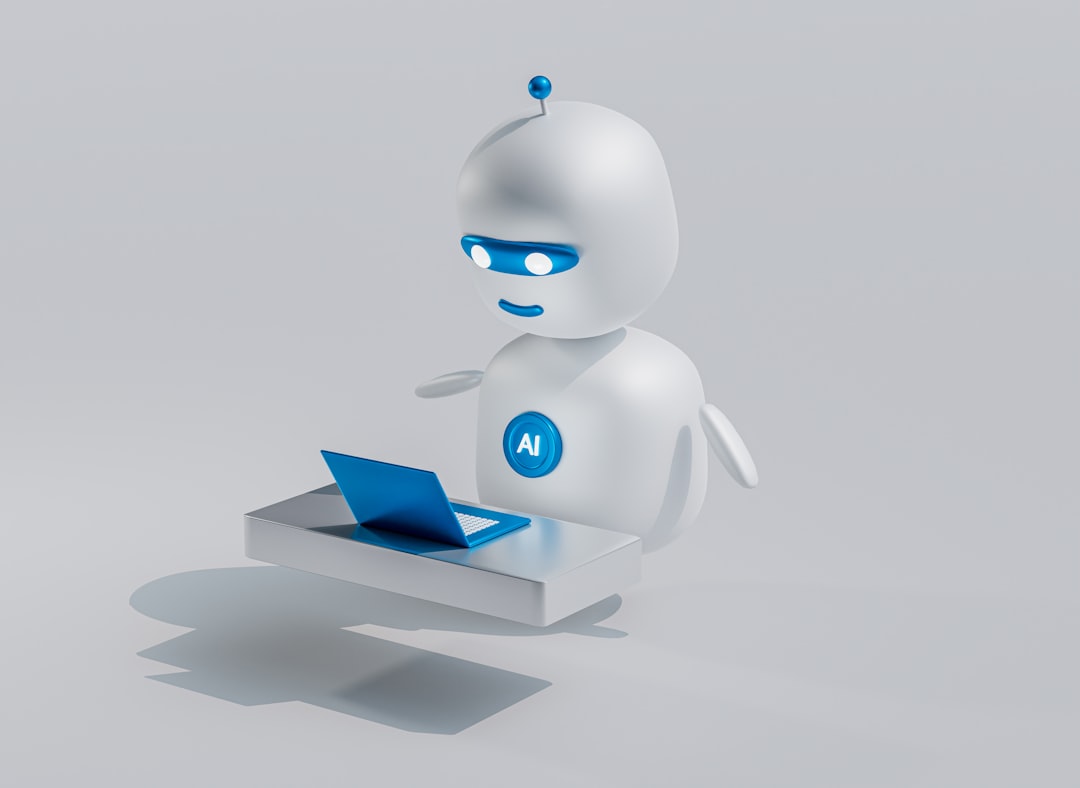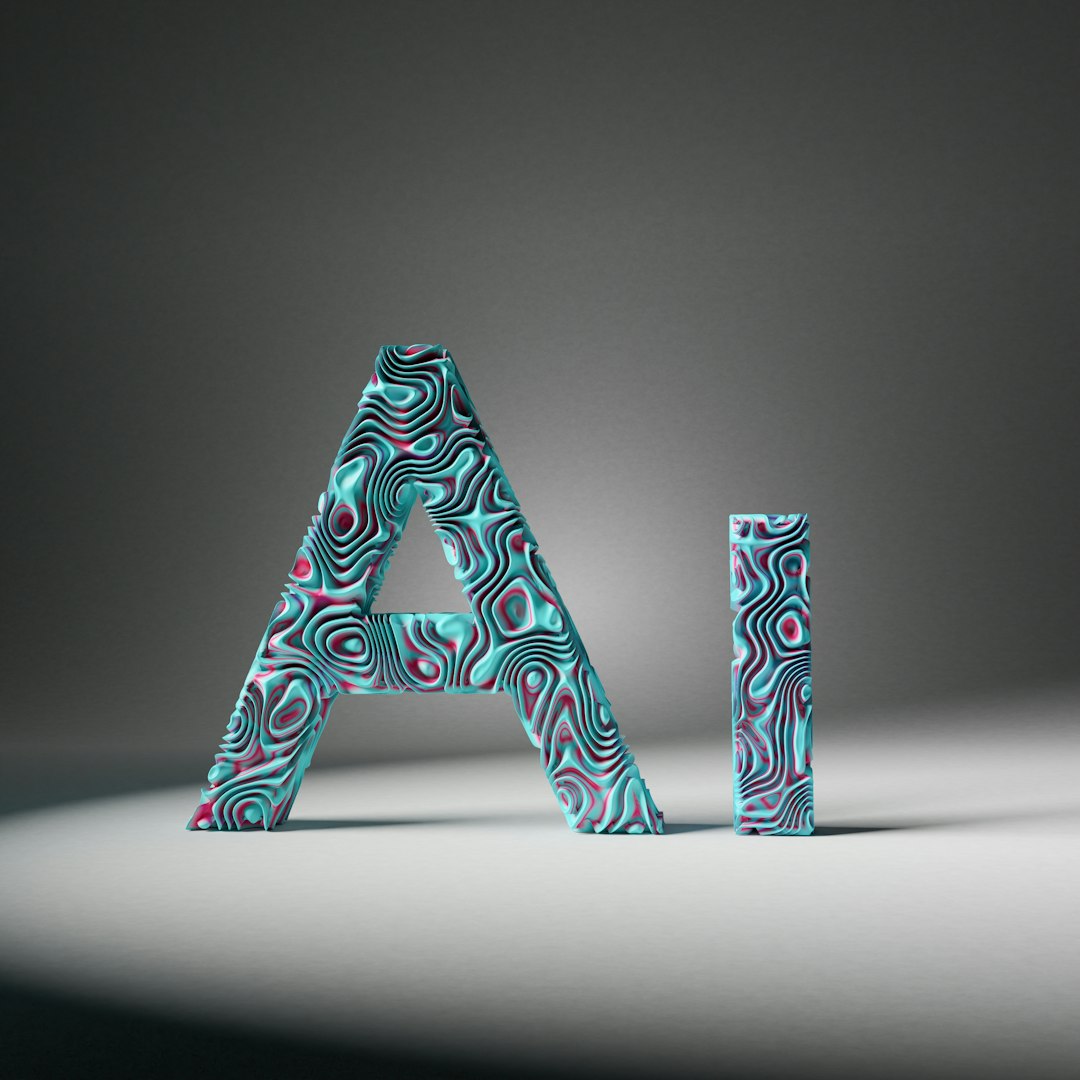Enhance your Business Operations Using AI
.webp)
.png)
Artificial Intelligence (AI) is no longer a futuristic concept. It's here, transforming the way we work and live.
AI tools are becoming integral to modern business operations. They're enhancing human workflows, making them more efficient and intelligent.
But what does this mean for businesses and individuals? How are AI tools revolutionizing everyday work processes?
This article aims to answer these questions. It will delve into the world of AI tools and human workflows, exploring how they're reshaping industries and work practices.
We'll look at how AI is enhancing collaboration, streamlining tasks, and providing valuable insights. We'll also discuss the benefits of human-AI collaboration and the role of AI in task management.
The focus will be on human-centric AI. This approach emphasizes augmenting human skills rather than replacing them. It's about using AI to make us better at what we do.
We'll also explore the challenges of AI workflow integration. It's not just about adopting the latest technology. It's about understanding how AI fits into our roles and responsibilities.
AI productivity tools will also be a key topic. These tools can lead to better work-life balance by reducing overtime and improving efficiency.
Finally, we'll look to the future. What does the rise of AI mean for the future of work? Could we be working alongside AI co-workers and digital assistants?
Join us as we explore the exciting world of AI tools and human workflows. It's a journey that promises to be enlightening and thought-provoking.
Welcome to the AI revolution.
The Rise of AI in Business Workflows
AI's influence on business workflows is undeniable. It's reshaping how tasks are performed and decisions are made. Traditional processes are being transformed at an unprecedented pace.
Businesses across industries are leveraging AI to gain a competitive edge. AI tools provide a means to streamline operations, reducing time spent on repetitive tasks. This transformation allows employees to focus on strategic and creative endeavors.
Workflow automation is a key feature of AI in business. It's not just about efficiency, but also accuracy and error reduction. Automated systems can handle complex processes, delivering consistent results.
AI's role in data analysis is also significant. With vast amounts of data at our disposal, AI provides insights that were previously unattainable. Predictive analytics help businesses anticipate trends and make informed decisions.
AI in business workflows extends beyond simple automation. It's about enhancing capabilities and driving innovation. As AI technology continues to evolve, its integration into daily operations will only deepen. This evolution promises to unlock new levels of productivity and efficiency.
Understanding Human-AI Collaboration
Human-AI collaboration represents a transformative shift in how work is conducted. By blending human intuition with AI's computational power, businesses can achieve extraordinary outcomes.
In collaborative settings, AI serves as a powerful assistant. It offers recommendations and uncovers patterns that humans might overlook. This synergy leads to more informed and efficient decision-making.
Moreover, collaborative AI tools empower team members to communicate and coordinate seamlessly. These tools break down geographical barriers, enabling remote teams to work together effectively.
Trust is a crucial factor in human-AI collaboration. Employees need to understand AI processes and outputs. Transparency in AI algorithms fosters a sense of reliability and enhances collaboration.
This partnership isn't about replacing human roles. Instead, it's about augmenting human abilities, allowing for greater focus on strategic activities. As the collaboration deepens, the potential for innovation and productivity grows exponentially.
Key Benefits of Integrating AI Tools into Human Workflows
AI tools are reshaping work processes, leading to enhanced efficiency and productivity. By integrating AI, businesses streamline operations and foster innovative work environments.
One significant advantage is the automation of routine tasks. AI handles mundane activities, freeing human workers for strategic endeavors. This shift improves job satisfaction and increases productivity.
Data-driven insights are another major benefit. AI analyzes vast amounts of data quickly and accurately, delivering actionable insights. These insights assist in making informed decisions, boosting business outcomes.
Additionally, AI tools enhance communication and teamwork. By facilitating smoother collaboration, they enable teams to work cohesively and achieve common goals more effectively.
Implementing AI also optimizes task management. AI systems prioritize and schedule tasks based on set criteria. This optimization helps maintain efficiency and meet deadlines consistently.
Below are key benefits of AI integration:
- Automation of repetitive tasks
- Quick access to data insights
- Enhanced collaboration tools
- Improved task management and scheduling
- Increased productivity and efficiency

Understanding these benefits underscores AI's role in elevating business capabilities. Embracing AI integration leads to measurable improvements across various aspects of business operations.
Streamlining Repetitive Tasks
AI excels at managing repetitive tasks that previously consumed human resources. By automating these tasks, AI enhances workflow efficiency and reduces potential errors significantly.
For instance, data entry, a traditionally time-consuming activity, is now handled swiftly by AI. This allows employees to focus on tasks that require creativity and critical thinking.
Moreover, AI’s precision ensures that routine operations, such as report generation and inventory management, occur with minimal oversight. This precision reduces the likelihood of mistakes and saves valuable time for the workforce.
Enhancing Decision-Making with Data Insights
AI tools transform how decisions are made by providing quick and accurate data analysis. With access to real-time data, decision-makers can respond promptly to market changes and business challenges.
Predictive analytics offered by AI helps identify trends and forecast future scenarios. These insights support strategic planning and risk management, giving businesses a competitive edge.
Furthermore, AI's ability to synthesize vast data sets results in more comprehensive market analyses. This capability leads to better-informed decisions that contribute to sustainable growth and innovation.
Improving Collaboration with Collaborative AI Tools
Collaborative AI tools have become invaluable in promoting teamwork across distances. By ensuring seamless communication, these tools help bridge the gap between remote and in-office teams.
Real-time project updates and digital workspaces enable team members to stay on the same page. This coordination reduces misunderstandings and fosters a more cohesive work environment.
Moreover, AI-driven communication platforms streamline interactions. They offer tools such as chatbots and virtual assistants, which ensure that team discussions remain efficient and on-topic, thus enhancing overall productivity.
Optimizing Task Management and Scheduling
AI tools revolutionize task management by intelligently allocating tasks based on priority and resources. This automation ensures that the most critical tasks receive attention first.
Through AI, teams can manage deadlines better. Predictive scheduling algorithms account for potential bottlenecks, offering solutions to prevent project delays.
Additionally, AI systems provide real-time updates on task progress, allowing managers to make adjustments on the fly. This level of oversight ensures efficiency and helps teams achieve objectives without unnecessary pressure.
Workflow Automation AI: A Deep Dive
Workflow automation using AI is transforming how businesses operate today. It automates complex processes that were once manually handled, saving time and resources significantly.
AI-driven automation reduces the likelihood of human error. By systematically executing predefined tasks, AI ensures accuracy and consistency across operations, which is crucial for maintaining quality standards.
AI technology enables dynamic workflows, where tasks adjust based on real-time data inputs. This adaptability ensures that business processes remain efficient even as conditions change rapidly.
The integration of AI into workflows simplifies task orchestration. Tools intelligently manage workflows, orchestrating tasks across different systems with little human intervention, thereby optimizing efficiency.
Below are key elements of workflow automation AI:
- Task orchestration and sequence management
- Real-time data processing and adaptation
- Cross-platform integration capabilities

Furthermore, workflow automation with AI supports scalability. As businesses grow, AI systems can handle increased workload demands without proportionally scaling workforce, maintaining efficiency.
Case Studies: AI Efficiency Tools in Action
Examining real-world scenarios reveals the transformative power of AI efficiency tools in action. Companies across industries are leveraging AI to enhance operations and gain a competitive edge.
In the finance sector, AI tools are employed to automate routine tasks like compliance checks. By doing so, institutions can focus on strategic financial analysis, improving decision-making.
Manufacturing industries utilize AI for predictive maintenance of machinery. By anticipating potential equipment failures, companies minimize downtime, ensuring smooth production cycles and consistent product supply.
A retail giant adopted AI for inventory management, significantly reducing overstock and stockouts. This resulted in optimized supply chain processes, leading to cost savings and efficient resource utilization.
AI is also making waves in marketing. With tools that create personalized content, businesses can better engage their audience. This personal touch increases customer satisfaction and brand loyalty.
Healthcare providers use AI tools to analyze patient data, improving diagnosis speed and accuracy. This enables doctors to provide targeted treatment plans, enhancing patient care quality.
These examples highlight AI's potential to transform various industry processes. By implementing AI tools, organizations can increase operational efficiency, ensure better decision-making, and maintain a robust competitive position in the market.
Human-Centric AI: Balancing Technology and People
Human-centric AI focuses on using technology to enhance human skills, not replace them. It values human input and creativity while providing robust support systems through AI tools.
Emphasizing human-AI collaboration ensures that technology works as an augmentation, empowering people to achieve more. This approach preserves the human touch in customer interactions and decision-making processes.
Incorporating human elements in AI-driven workflows encourages employees to embrace technology rather than fear it. It ensures that AI is viewed as a partner, making complex tasks more manageable and less daunting.
The design of AI systems should take human needs and abilities into account. This includes intuitive interfaces and transparent processes that encourage user engagement and ease of use.
Organizations that prioritize human-centric AI foster innovation and adaptability. They create work environments where technology complements human skills and work processes, driving overall productivity and satisfaction.
The Importance of Ethical AI Integration
Ethical AI integration is vital for maintaining trust and transparency. It involves creating systems that are unbiased, fair, and respectful of privacy.
Guidelines and regulations help ensure AI decisions are accountable and explainable. Transparent algorithms enable users to understand how AI arrives at its conclusions, reinforcing trust.
Organizations must consider the ethical implications of AI use. This includes data handling and the potential social impact, ensuring that AI systems are deployed responsibly and beneficially across all facets of business.
AI Task Management: Revolutionizing Prioritization and Execution
AI task management systems have transformed how we prioritize and execute daily duties. They provide real-time insights, allowing teams to adjust quickly to changing workloads.
These systems analyze data to predict the optimal order of tasks. This leads to better scheduling and the efficient use of resources. It minimizes delays and enhances productivity, ensuring projects are completed on time.
One significant advantage of AI task management is its adaptability. Systems can learn from past experiences and continually refine their processes. This capability helps in allocating resources more effectively and managing unexpected challenges.
AI tools streamline communication within teams, enhancing collaboration. By organizing tasks and providing reminders, they reduce the risk of miscommunication and ensure everyone stays informed and aligned.
Incorporating AI into task management not only optimizes efficiency but also enriches work-life balance. With reduced stress from better-organized workflows, employees can enjoy more downtime and focus on strategic thinking.
AI Workflow Integration: Strategies for Success
Integrating AI into workflows can be a game-changer for businesses. However, success depends on strategic planning and effective execution.
To begin with, evaluate the current workflow. Identify areas where AI tools can provide significant benefits. This initial assessment helps in understanding the potential impact AI can have on existing processes.
Next, create a comprehensive AI integration plan. This plan should outline the stages of implementation, from setting objectives to measuring success. Clear objectives ensure that all stakeholders are aligned and aware of the expected outcomes.
Choose the right AI tools tailored to the organization's needs. Selecting tools with user-friendly interfaces can facilitate adoption. Ensuring compatibility with existing systems is also critical for seamless integration.
Essential Strategies for AI Workflow Integration:
- Assess current workflows for AI integration opportunities.
- Develop a detailed and actionable AI integration plan.
- Select user-friendly AI tools compatible with existing systems.
- Provide continuous support and training to staff.
- Monitor and evaluate AI performance regularly.
- Adjust strategies based on feedback and outcomes.
Ensuring ongoing support and training is crucial. This allows staff to become comfortable with new tools. It also prepares them to maximize these technologies’ potential effectively.

Finally, continually monitor and evaluate the AI systems' performance. Adjust strategies based on feedback and outcomes. Continuous improvement is key to long-term success in AI workflow integration.
Training and Development for AI-Enabled Workforces
Training is vital for a successful AI transition. Employees need to understand how AI can complement their work.
Start with basic training sessions focusing on AI fundamentals. This helps demystify the technology and makes it more accessible. Understanding AI’s potential fosters a collaborative mindset.
Offer specialized training programs tailored to job roles. This ensures that every team member can effectively leverage AI tools to enhance their performance. Regular updates on AI advancements maintain skills at peak relevance.
Overcoming Challenges in AI Adoption
AI adoption is not without challenges. Resistance to change is a common hurdle. Address this by communicating the benefits clearly and engaging with all staff levels.
Budget constraints can also pose barriers. Start small and scale up AI investments as you observe positive outcomes. Demonstrating initial successes can help secure further investment in AI.
Ensure ethical and responsible use of AI. Implement robust data protection measures to build trust. Transparency in AI operations helps address privacy concerns and fosters acceptance within the organization.
AI Productivity Tools: Measuring the Impact on Work-Life Balance
AI productivity tools are transforming how we manage tasks. They have the potential to positively impact work-life balance by reducing workload.
One key benefit is the automation of mundane tasks. By handling repetitive activities, AI frees up time for employees to focus on more strategic work. This shift not only boosts productivity but also reduces stress levels.
Balancing work with personal life becomes easier. AI tools streamline processes, allowing professionals to manage their time more efficiently. With time savings, individuals can allocate more attention to personal obligations or leisure activities.
These tools also bring greater flexibility to workplace management. Real-time data provided by AI helps in making informed decisions about when and how work should be done. This can lead to more adaptive and less rigid work schedules.
However, it’s vital to ensure these tools do not lead to over-reliance or burnout. While AI enhances efficiency, it should be used to support healthy work boundaries. Organizations need to ensure that AI is integrated in a way that truly promotes work-life balance.
The Future of Work: AI Co-Workers and Digital Assistants
The future of work is evolving rapidly with AI at the forefront. AI co-workers and digital assistants are becoming a staple in modern workplaces. They are designed to complement human capabilities, not replace them.
AI co-workers excel in processing and analyzing vast amounts of data. They provide insights and predictions that humans might miss. These capabilities enable businesses to make data-driven decisions with greater confidence.
Digital assistants, like chatbots and virtual agents, handle routine customer inquiries efficiently. They offer quick responses, improving customer service and freeing up human agents. This enhancement allows human workers to focus on complex and creative problem-solving.

As AI tools become more sophisticated, they promote more effective human-AI collaboration. These technologies are embedded seamlessly into daily workflows, enhancing productivity. Employees leverage AI to automate mundane tasks, gaining valuable time for strategic efforts.
The integration of AI in work environments requires a cultural shift. Training and adaptation are crucial to fostering successful human-AI interactions. As companies embrace AI, they must prioritize human-centric approaches that ensure both technology and people thrive together.
Conclusion: Embracing AI for Competitive Advantage
The impact of AI on business operations is undeniable. As AI tools continue to reshape workflows, they offer remarkable opportunities to enhance productivity. Companies that integrate AI effectively gain a significant edge over their competition.
Adopting AI is more than a technological upgrade; it's about transforming how we work. Businesses must focus on human-centered integration, ensuring technology enriches human roles. This balance empowers teams to achieve greater innovation and efficiency.
To stay competitive, organizations need to embrace AI as a strategic ally. By harnessing the power of AI tools, companies can streamline operations, improve decision-making, and enhance customer experiences. Embracing AI not only prepares businesses for future challenges but also positions them as leaders in a rapidly evolving market.
FAQs
Ready to Transform Your Business?
Contact us today to explore how our solutions can elevate your business to new heights.


.png)
.png)
.png)
